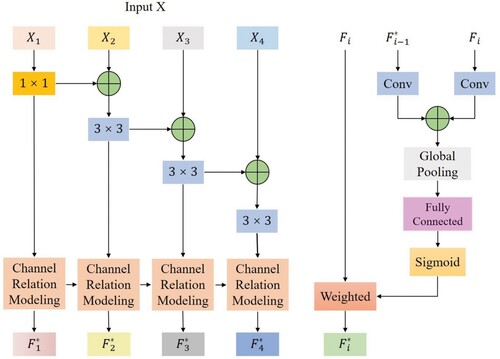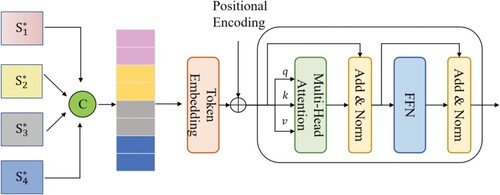Figures & data
Figure 1. The overall architecture of the MC-Net. The image encoder with multi-scale feature extraction and feature aggregating module is used to extract visual features, and the description decoder with visual-text alignment LSTM is used to generate description sentences.

Table 1. Settings and results of ablation experiments on the UCM-Captions.
Table 2. Settings and results of ablation experiments on the Sydney-Captions.
Table 3. Settings and results of ablation experiments on the RSICD.
Table 4. Settings and results of ablation experiments on the NWPU-Captions.
Table 5. Comparative results of MC-Net on the UCM-Captions.
Table 6. Comparative results of MC-Net on the Sydney-Captions.
Table 7. Comparative results of MC-Net on the RSICD.
Table 8. Comparative results of MC-Net on the NWPU-Captions.
Figure 5. Captions results by MC-Net on four datasets. The first to the fourth columns are selected examples from UCM-Captions, Sydney-Captions, RSICD, and NWPU-Captions, respectively.

Table 9. Captioning performance Comparision with different multi-heads(H) values on the UCM-Captions.
Table 10. Comparison of our methods in terms of inference speed (images per second), MACs and parameters. All results are reported based on the UCM-Captions.
Table 11. The comparison results with different scale of contextual information on the UCM-Captions.
Data availability statement
The data that support the findings of this study are available from the corresponding author, upon reasonable request.



